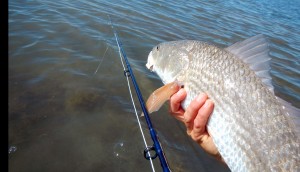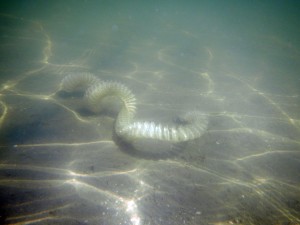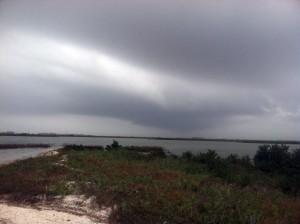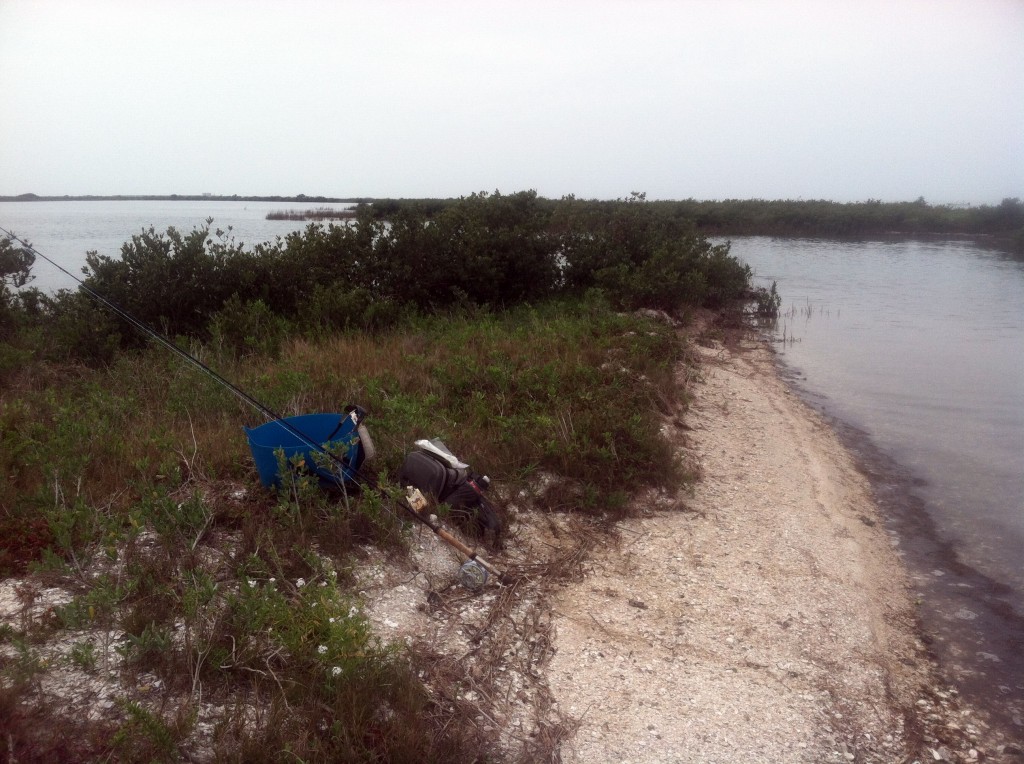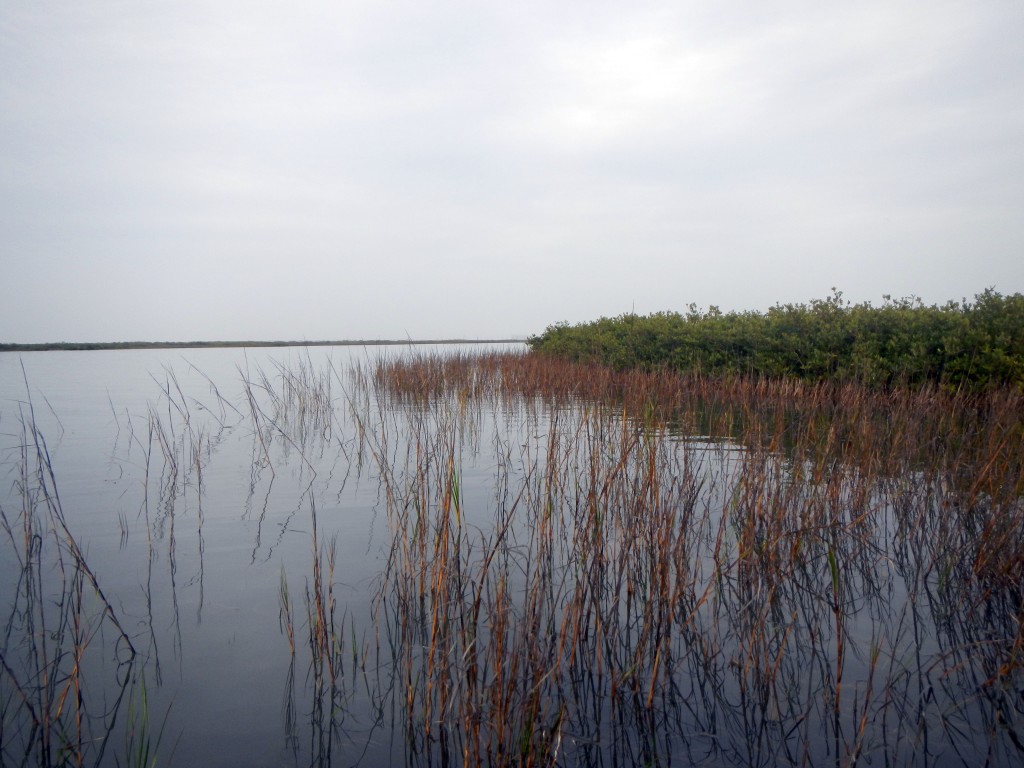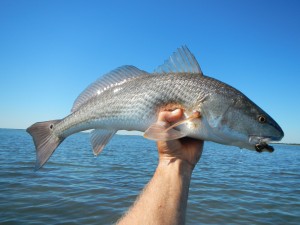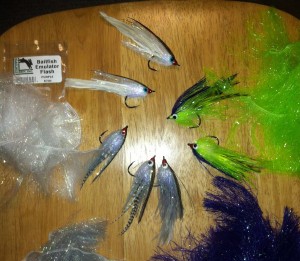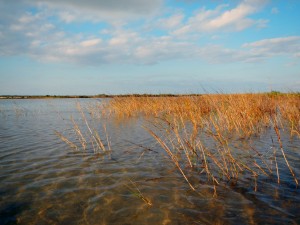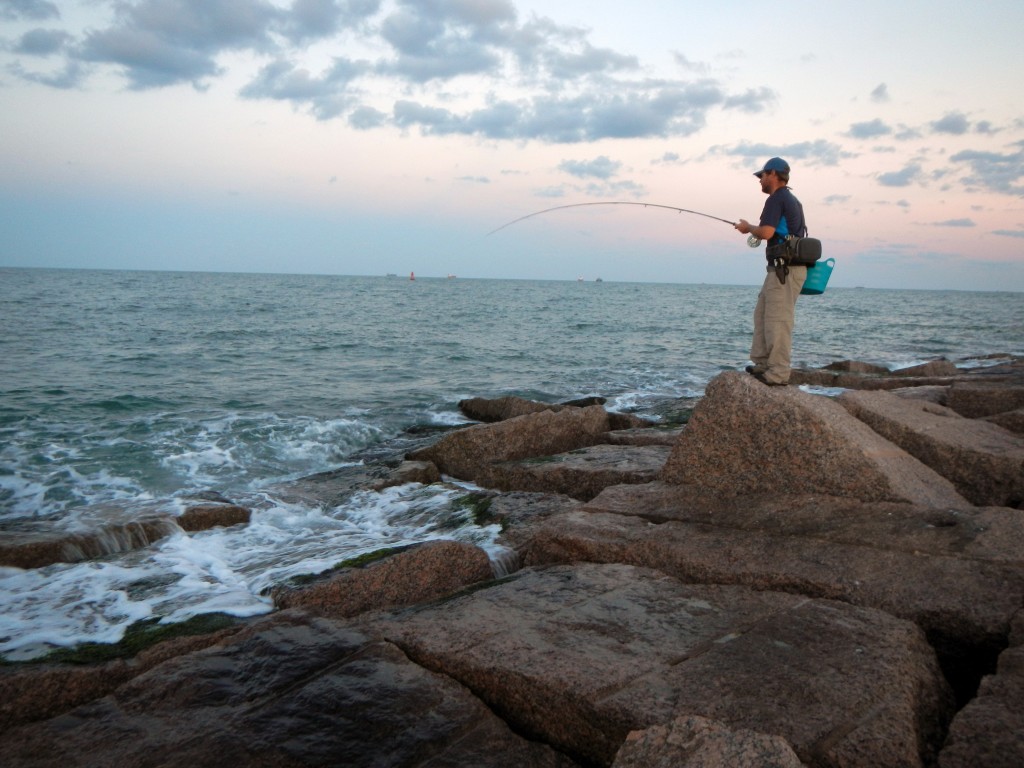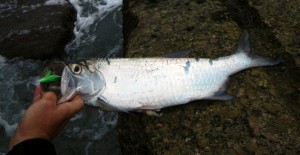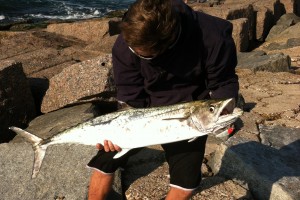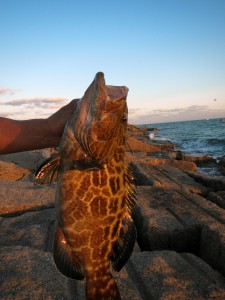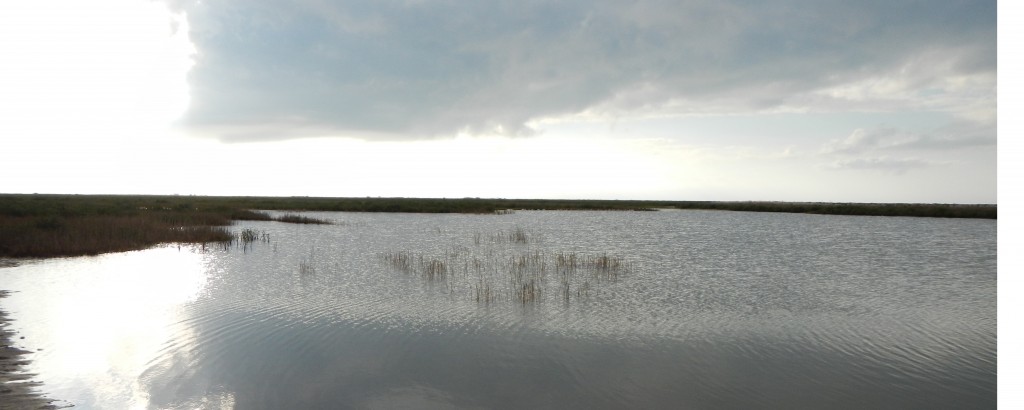IT’S GO TIME!
The phone rings while sitting in the truck at the airport fully loaded with enough fly fishing gear, food and water rations for two people for four days. The restless ringer on the phone indicates that a fishing buddy has landed at Corpus Christi International Airport. “You ready for this?” I ask and Captain Natereplies, “READY AS EVER!”

Heading to Fly Fishing Heaven
First things first! Get to Wal-Mart and purchase a non-resident fishing license for the tourista. “You better get the annual, you WILL be back!” We promise each other there are no doubts. If this winter’s fishing season is as good as it has been lately, it would be a good idea to change your return flight now and stay a few more days to be able to enjoy some decent weather after these gale force winds and small craft advisories lift. Good luck with surviving that cold front!
Nonetheless, we were going NOW, before the North storm hits with 30-knot winds freezing anything wet and we are running out of daylight since the flight landed around noon. Hot on the throttle of the old Chevrolet, all 4 wheels engaged and spinning like mad men, we head off-road in search of tarpon on foot in the South Texas Coastal Bend area.
There is nothing like rigging rods and leaders in the truck as it barrels down the dirt road leading to a dead end like most fishing trips, it is a rough road going nowhere and makes tying knots a true challenge of any skilled fly-angler.
“What are they eating?” he says with courage. “Baitfish in 3-6 inch sizes,” I tell him. “Here, use this, tie it on good, and it wouldn’t hurt to add a bimini twist to the class tippet.”
As we arrive and park, we scramble to find stripping baskets and then he turns to me and I see him grab a medium weight spin rod. I protest necessarily and inform him that if he’s going to use a spin rod, “You’re going to want a bigger rod!” Laughs are exchanged with a wink or two and we start to lace up, strap on, and close any open zippers with grueling anticipation of the approaching storm which could shut down our world-class fishing spot faster than an American Banker can foreclose a delinquent home-owner in America.
“Where do we start casting?” I am asked as we head in the direction of the rocky terrain most people call the jetty. “Hold your fire!” I respond with encouraging patience, “We are almost to the honey hole!”
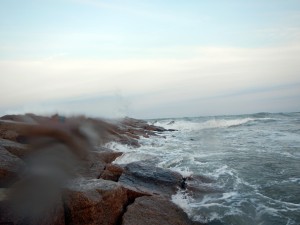
City of Granite – South Texas Jetty
Within minutes of arriving on that special granite rock which would become our perch and our shelter from the tormenting winds and rain we see fishy stuff going on and the excitement builds. It is soon to be learned that those giant granite rocks will also become our refuge for the next four days. Our eyes are already stinging as the winds grow and white water spray begins coming over the jetty showering us, we scan the water surface for all 360 degrees looking for the tell-tail sign of megalops.
Almost covertly, a soft plastic flies from its 7’6″ cannon of a spin rod rigged with 30-lb braid and lands in the water with a big splash. “Are you sure this lure isn’t too big?” Nate says.
“Hell no! Keep it in the water, work it good and hold on when you snag a rock,” I respond.
“What rock? OH DAMN! That rock just moved!” Set the hook, wait for the screaming drag to slow to a dull roar and try your best to reclaim the long length of line that was just stolen from the spool minutes ago. “Done!”
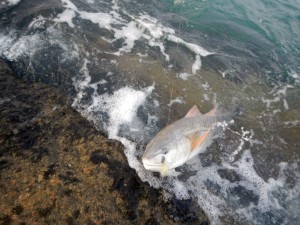
Howdy!
First fish landed, a respectable red fish measuring just inside the slot limit. We release the fish quickly back into the water which is beginning to churn like a butter bucket strapped into the tea cup ride at Disney world.
Then it happens again, another nice redfish takes the soft plastic yummy bunny and this time the redfish is just over slot limit. Back it goes like 99.99% of all fish we catch. The sense of urgency increases and our motions begin to accelerate as we hop over a few more granite obstacles searching for another safe spot to stand with advantageous positioning.
Then I hear someone familiar scream. “TARPON! It just rolled! There! Quick! CAST! CAST! CAST!” we yell to each other. “Damn! No takers.” Cast again, this time with a little bit of frustration. “What are they eating?” our eyes strain to try to identify any visible bait in the water.
Telling myself to keep calm, I prepare for another cast of the fly line and launch it out into the open water as if it were a hot grenade with only a second remaining before detonation.
Count to 15 while recovering from a small bird’s nest in the running line. Stripping line in slowly, the last of the slack is removed from the 80 feet of fly line in the water and contact is made with the fly. Slow long pulls, short strips, and toss in a few A.D.D. twitches, a tap is felt in the line, however slight, I set the hook and immediately the silver king erupts from the water like a government missile sent on its one-way mission. “TARPON!” I scream at Nate, “You should have grabbed your fly rod! HAHAHAHA!”
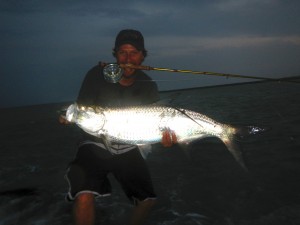
Estimated at 50 inches of Pure Rock Fury
As the first school tarpon is released into its watery lair, the sun begins to set on our environment and we notice that the tarpon are feeding more actively and the pressure is building. Suddenly we see a large shark in the distance also get airborne and the image of a 200-300 pound shark is burned into our minds as we imagine it trying to eat a tarpon from our hands rock-side. I hand the fly rod to Nate and say, “Here! Use this! It’s your turn homey”.
Off it goes the 3/0 tarpon fly flings about and lands in the water. Strip, strip, strip, And SET! Nate’s virgin tarpon launches itself into the air in desperate attempts to throw the razor-sharp Tiemco hook to no avail and soon Nate has landed his first tarpon on the fly. Snap some pics and off it goes quickly before Mr. Shark decided to join us on the rocks for a cocktail!
So as night falls and the tarpon continue feeding at our feet, Nate and I take turns with the fly rod and we land a total of three more poons, once of which took its rightful place as my personal best and Nate was lucky enough to mark two more species (the tarpon and redfish) off his bucket list. We retire for the night not wanting to wear out the fish too much, and of course, allow them to continue to feed on their own uninterrupted.
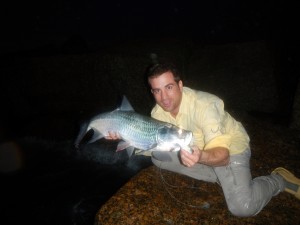
Fly Fishing Tarpon into the night in the South Texas Coastal Bend
With the flower of sugar cane made into a welcoming beverage, we shed our saltwater soaked clothes and prepare a sandy dinner of steak and hot chili peppers on an open fire. We recount our experience from the evening and strategize ourselves into a stupor while we dance around the fire with Clutch for our evening tunes.
When we awoke the following morning we notice that the Winter Storm had not arrived and we begin preparing our gear to go knock on Mr. Tarpon’s door again. But just minutes later, gale force winds with gusts over 30+ knots set down on us hard and we move the truck into what little lee can be found on the beach and watch the sandstorm ensue. “There goes our morning fishing session” we say to each other.
By the afternoon we couldn’t stand to watch any longer with hopes of diminishing winds, we reluctantly venture out into the granite city of rocks and hope for the best even though the winds have not dropped below 20mph. Low and behold we find some tarpon still feeding and are able to land three more teenage tarpon and jump just as many more. Time to retire, day 2 seemed to take forever but ended so fast. The third day conditions had not improved and no sign of weather change coming in the future for day 4, we decide to fish the morning and head home late afternoon with little fuel and a luckily low tide to lick our wounds, regroup and try to target some other species a little more local to my house where fresh water showers and dry clothes await.
In retrospect it is always good to break a personal fish record and to do it on foot brings such enjoyment in our sport and why we do it regardless of the weather. We claw our way around exposed to elements regardless of how horrible the conditions are. Bearing our teeth and with true grit setting ourselves up for a single moment of excellence, or pure accidental catch, it is truly the fish themselves that makes our efforts worthwhile however invaluable the experiences are priceless. In any other case, our determination would be unnecessary and futile if the fish were not a more determined individual than we.
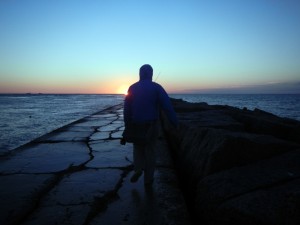
Early Morning Colors
As we head back to the airport to bid my fishing buddy farewell, comrades reflect, and we realize that our concrete passions are shared. Not only as mere mortals, hard-core sportsmen, personal conservationists and obsessive about the next time Mother Nature deals us some brutal fun but also filling us with vibrancy for life as we know it.
I’d rather not be in any other place than where my mind lives, my body resides and where flies are eaten eagerly by the next awesome creature that fills our thoughts by day and dreams by night.
Keeping the hooks sharp,
Captain Ken Jones
USCG OUPV-6 Licensed
361-500-2552
Port Aransas, Texas
